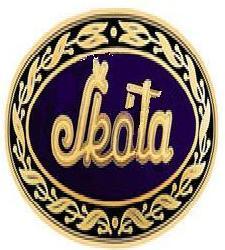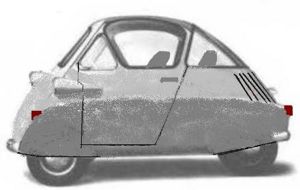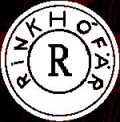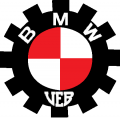Automotive industry in Bohemia
The Birth of Bohemian Automotive Industry
During the 1890’s and early 1900’s, all the most important European industrialized countries had already established their own automotive industry. Bohemian Kingdom was an exception, having no local car brand.
Prior to First Great War, there were already some hundreds of cars, trucks, and buses on Bohemian roads. Mostly they were made in neighboring Holy Roman Empire. The first private car registered in Bohemian lands was a German made Benz which belonged to a businessman from Prák.
Lórin & Klément, a motorcycle manufacturer from Punclaf [Jungbunzlau, Mladaa Boleslaw] owned by Vencäl Klément and Vencäl Lórin, intended to launch the first Bohemian made automobile in 1905, but the Klément's death in a motorcycle accident ruined that dream. Lórin then studied engineering at Charles-Rudolf University in Prák and later started working at the largest bohemian corporation, Ti Škóta Štólverki which owned many of the local coalmines and factories which produced steel, locomotives, and weapons.
Lórin wrote a letter to the company’s owner and richest man in Bohemia, Émil Ritär fon Škóta, purposing the creation of an automotive branch. Škóta didn’t answer the letter. Meanwhile, Europe suffered from the First Great War in which Bohemia was neutral, Ti Škóta Štólverki made a fortune selling coal and weapons to all sides in the conflict.
The very first company able to produce a car in Bohemia was Ta Rinkhófära Nesälstorfla Vákänpó (Wagon and Carriage Manufacturer in Nesälstorfla) founded in 1850 by Iknác Šustala (1822-1891). In 1897 they had produced a rather luxury car called Président and in 1898 the first heavy truck called 0ltfotär O-1 (named after the highest mountain of Höch Kesänk). This went almost unnoticed, although the company was able to locally sell their whole production (ca 6 Présidents and around 10 trucks).
In the aftermath of the First Great War, Lórin wasn't responsible for the first widely known Bohemian made car. In 1919, Franc Frojt, after inheriting his father’s horse carriage manufacturing company, turned it into Ti Ersti Pémiši Motorverki (The First Bohemian Motorworks) and unveiled the prototype of the first popular Bohemian automobile, first in Prák and later in Paris.
Such a car came into production soon after, in 1920, and was called Frojt Model 6.166 which became known as “The Submarine” (Ta U-Pótna). Frojt’s car had a rather bizarre design, even futuristic. It never sold in very large numbers, but as the years passed by, model range grew, establishing locally its name as a luxury car brand.
Expansion
Meanwhile, other industrialists found interest in producing their own cars. During the early 1920’s, airplane manufacturer Aero entered the car business and released several down-market car models which started selling reasonably well and competed with German imports. Also, bicycle and motorcycle manufacturer Ti Váltära Motorverki started to produce Italian cars under license and under its own nameplate. Ta Prákär Mašinpó, another motorcycle manufacturer, also had started producing French licensed cars.
Finally, Émil fon Škóta got interested in automotive industry and commissioned Lórin to create Ti Škóta Štólverki’s car branch. Ti Škóta Ótoverki launched its first cars in 1924, and being backed by the largest industrial corporation, soon started to dominate Bohemian car market, surpassing Váltär, Aero, and Prága as the leading Bohemian car manufacturer.
In 1926, Bohemia was one of signatory countries of the Paris Convention on Road Traffic. The result was supposed to be switching from left to right hand traffic “within a reasonable frame of time”. However, Bohemia only switched to right hand years later when the kingdom was annexed by the Holy Roman Empire in 1939 after Hesslerian regime centered in Prussia forced all German states with left-hand traffic to shift.
In 1932, another company entered the car business. Ti Sótomka Kučni [Kutsche/carriages], an old horse carriage factory from Hóch Mót [Hohenmauth, Wysokee Mejto], started to produce chassis for other Bohemian car manufacturers. Sótomka chassis equipped some of the most beautiful Škóta, Prága and Aero models of the Interbellum period.
During the 1930’s, automotive industry in Bohemia had grown fast and became well known across Europe. Almost all manufacturers now had important market shares and a very successful national campaign for buying nationally made Bohemian cars, trucks and buses made the best sellers, completely surpassing the German imports.
In the Holy Roman Empire, a Bohemian of German ethnic origin, Ferdinand Porsche (Fértinönt Poršä), designed the Volkswagen Type 1 during late 1930's, which would later become better known as the Volkswagen Bug (among many other names worldwide). He also later founded the Porsche sport luxury cars company from Wuerttemberg, HRE.
Local brands diversified their products by launching new models. Rinkhófär focused on trucks, although he produced few new Président limousine models, but all only bespoke, no serial production. Škóta produced cars of all types, from down-market to up market models being the most impressive those having Sótomka’s shells. It also became a major truck and bus manufacturer. Prága also moved up market and completely abandoned licensed made cars by mid-1930’s. Both Váltär and Aero remained mostly down-market manufacturers. All were rather conventional in terms of mechanics and design (apart from Sótomka shelled cars). Frojt was the exception. It always kept its unique and aerodynamic designs allied with advanced mechanics. But being rather expensive and strange-looking, Frojt was never able to become a real mass producer, always remaining the least-selling brand.
By the time Bohemian Kingdom was absorbed by the Holy Roman Empire, it was already a major European car manufacturing power being just behind England, HRE, France, Italy and the Scandinavian Realm as largest producer and exporter.
The Second Great War and the "First Carquake"
As result of the spread of international warfare, the car industries of almost all European countries were converted to military purposes. Only in the Federated Kingdoms did mass car manufacturing still exist, although in much smaller production figures than during Interbellum period. The Federated Kingdoms, NAL-SLC and Louisianne combined produced almost all private cars in the world during Second Great War period. Due to generalized warfare many of pre-war brands became defunct causing the biggest shake in the world’s automotive industry. Historians called it the “First Carquake”. In 1939, Bohemia was incorporated into the Holy Roman Empire. The names of the local automotive brands were Germanicised: Prága became Prag, Škóta became Schkoda, Váltär became Walter, Oltfotär became Altvater and Frojt became Freud. Bohemian manufacturers followed worldwide tendency and progressively abandoned private car production, being commissioned by the Hesslerian regime to take part in the German war effort.
Bohemian makers now produced all kinds of weapons, engines and aircraft for the empire, and the only exception was Freud which was able to keep producing private vehicles as late as 1943. One of its models, Frojt Model 6.233 (better known as Ten Tojčvákän /German Car), was a popular sports car among the German officialdom, but also rather unsafe. Many German officials found the Model 6.233 deadly and the situation got so serious that by the personal order of Adolf Hessler Frojt was forbidden to produce private cars. People used to say as a joke that the German Car was “the Bohemian revenge for German occupation”.
As all former Bohemian automotive factories were now connected with German war effort, Allies bombed them constantly, turning them into debris. Also, the Czech White Legion, which was able to reach the industrial region of Tescheland, fled to Russia, taking with them machinery and parts from Ta Rinkhófära Nesälstorfla Vákänpó. When the war was over, it was used for producing the first post-war Russian car (VAZ-411) which was in fact the Interbellum period Président R87, a luxury car. Ta Rinkhófära Nesälstorfla Vákänpó and VAZ remained for years under litigious judicial relationship.
Post-war years and reconstruction
In the aftermath of the Second Great War, much of Europe was in ruins. As soon as the hostilities ended, the richer wanted cars again, and soon after, the car industry started its rebirth all over Europe. At first, pre-war cars were reintroduced by the remaining brands, but rich buyers, influenced by the North American car industry which was barely affected by the war, started to want more modern designs.
Bohemia was no exception, and little by little its car industries started to be reborn, first with old models and later with new designs. Váltär, Rinkhófär, Prága, Frojt and Škóta progressively restarted their car, trucks and buses productions. Aero wasn't the exception in the kingdom. It remained producing aircraft and engines until today as a result of suspicion of the advance of Snorism across Central and Eastern Europe. Also, Sótomka disappeared from car business as a result of its owners’ death during the war. Meanwhile, Bohemian traffic returned to left-hand.
Škóta aimed once again to dominate Bohemian car scene, but the people being now too poor to afford even the cheapest pre-war cars, it turned to those who had money enough to buy a car besides producing buses and trucks. It moved up the market becoming larger and more luxurious. Because Bohemian car market was too small, Škóta successfully turned mostly into exporting. Exports went mostly to France, Scandinavian Realm and other large right-hand traffic countries' markets, and by the end of the 1950’s over half of the company’s production served foreign upper-middle class people.
Rinkhófär remained mostly within trucks, limousines and luxury cars, although there was a plan for popular car, R-plán (R600), but failed due to high price.
In inverse the once smallest, more exclusive and luxurious bohemian car maker, Frojt, surprised everyone moving down market. In 1952 it launched Model 2.33, better known as the Egg Car (Ten Ojvákän). The Egg Car was a tiny three wheeled car which featured many technological innovations at a cheap price. It had the driving wheel in the middle of the dashboard and a small lambda (inverted V) engine which helped on car handling stability. It had a modern aerodynamical design following the factory tradition. The Egg Car became soon the bestselling car in Bohemia so as massively exported all across Europe. Production was so intense that Frojt needed to build a second car factory in Pryn, inaugurated in 1954. Even so demands worldwide became much bigger than factories’ capacity and the Egg Car production was licensed to six foreign car manufacturers. The Egg Car and its clones became an icon of European post-war reconstruction together with other people’s cars such as the German Volkswagen Type 1, English Issigonis Minor and Mini models among others.
Frojt also returned to luxury car market. First it reintroduced old pre-war models (which still seemed modern ones) and later new ones. In 1955 Habsburg Royal Family decided to replace its German made Mercedes-Benz official cars by national made cars. It showed the world to be a modern royal family by choosing Frojt cars instead more conventional up market Škóta or Prága models. Later in 70ies, they have switched to limousines of Rinkhófär, although for public appearance, Frojt remained the most used.
Beside these also Váltär and Prága were back to automotive business. Váltär remained a down market brand with some local success but not much known abroad. Prága became a generalist car maker having more success exporting trucks and buses than private cars.
Following the traditional Bohemian neutrality Prága established joint ventures in snorist countries which produced under license some of their models. In Malorussia (present-day Ukraine) Prága established Praga Malorusskaya car brand and in Muntenia established Autocamioane Valahia truck and bus brand and help rebuilding Malaxa luxury car brand for serving the ruling elite.
The Second Carquake
Background
By late 1950’s worldwide automotive industry was already rather strong. As reconstruction went by many families already owned a car in richer countries so as the number of trucks and buses grew dramatically.
There were two kinds of vehicles according to their manufacturing origin. Those from most of European countries and Louisianne had left-hand drive (LHD) as these were countries where traffic flew on the right (Right Hand Traffic, RHT). Those made in the Federated Kingdoms, NAL-SLC and Australasia (for example) had right-hand drive (RHD) configuration thus prepared to be driven on the left side of the roads (Left Hand Traffic, LHT). Despite different configurations all countries by then accepted imported cars with both configurations. The increase of traffic started to cause many accidents, partially explained by the lack of drivers’ visibility on wrong-hand drive configuration vehicles.
In 1958 English government banned LHD vehicles from its roads (except cars from tourists) for a matter of safety. Scottish and Kemrese governments followed soon such measure. Despite officially it had good intentions such measure seemed much to mainland Europe car manufacturers as an act of protectionism against German and French car imports. During next years strict homologation laws based on traffic safety and protectionism came as a chain reaction worldwide. Major brands like Volkswagen, Mercedes Benz or Adam Opel abandoned left-hand traffic countries while Swallow Sidecar aka SS (famous for its Jaguar line), English Leyland Group or Rootes Motors abandoned right-hand traffic countries for over ten years as it was considered by then too expensive to make both RHD and LHD configuration vehicles.
Such turmoil became known as the Second Carquake causing a major redistribution worldwide on car markets which made some of the brands to bankrupt. Ironically FK and especially Australasia and the NAL-SLC got rid of many of the mainland European and Louisiannan competitors but soon were invaded by a horde of Japanese-made cars at a time the Empire of Japan (a left-hand traffic country) was an emerging automotive power.
Effects in Bohemia
Škóta, being too dependable to its exports to France and northern HRE, saw those cars banned from that country losing its major markets. Such combined with the oil prices increasing due to the Suez Crisis (affecting middle class car buyers) caused major damage to the company. In 1961 Ti Škóta Ótoverki bankrupted leaving Bohemians in shock. Its factories were bought by Bavarian VEB BMW and has since then produced German cars (as well as Egg Cars under license).
Frojt was able to escape to all this turmoil. It was the only car manufacturer which had driving wheel in the middle of dashboard helped by a mirrors system giving good visibility in all kinds of traffic (a Frojt’s patent since the introduction of the Egg Car). Thanks to this Frojts were the only cars able to respect all homologation laws. The other bohemian car manufacturers didn’t suffer much also as they were mostly sold in Bohemia and mainland European car markets.
Rinkhófär survived only because of military commissions for supply and transport trucks and tramways.
Recent years
During late 1960’s Frojt unveiled some new innovating cars. In 1968 launched the first modulable seats car, the Model 4.106 Ta Vurštna (the Sausage), and in 1969 the amazing Model 8.333 Ten Fynfcik (the Fifty) equipped with all possible technological gadgets at that time.
The 1970’s were years of upsizing in worldwide automotive industry as consequence of the oil prices decrease caused by the Oil Crisis of Hijra 1393 (1973). In Bohemia also cars grew in size and luxury and the growing lack of interest by consumers for small cars (a worldwide tendency) made the famed Egg Car to start progressively to sell in smaller numbers. Even so it remained the best seller in Bohemia and several European countries until it was replaced by the New Egg Car (Model 4.100). By then the original and tiny Egg Car was one of the most successful cars in history selling two million bohemian-made units plus six million made abroad under license. The New Egg Car was awarded with the European Car of the Year Prize in 1986.
Bohemian automotive industry today
Today Bohemian automotive industry is considered internationally as advanced and quality built being exported worldwide. Recently Frojt announced its interest for launching its own Tesla engined car in near future, following the route started by Dorris-Miçubixi in 2007.
Frojts remain the most notable and technologically advanced cars in Bohemia having both strong name among both the lower classes (for its people’s cars) and upper classes (for its high speed and luxury cars). Due to its design they are often used in science fiction movies and there’s a strong international cult around some of its models, especially the Egg Car.
Váltärs remain conventional down market cars while Prágas are on middle distance between luxury Frojts and down market Váltärs. Prága is also the local biggest commercial vehicles and buses manufacturer, whereas Rinkhófär remains leading truck producer.
Aero never returned to automotive industry. Today it’s a worldwide known aircraft manufacturer producing both civilian and military planes. Also Škóta conglomerate is still the largest Bohemian business but also never returned to car production.
Beside national manufacturers VEB BMW is one of the most important cars (both private and commercial) manufacturers in Bohemia. It produces same models as in the HRE. Bohemian automotive industry is also composed by components factories from several European brands.
With two factories where 12 500 people work directly in automotive industry Nesälstorf is considered as the automotive capital of the kingdom. It has adopted a coat of arms showing a car, possibly the only in the world to do so. It is nicknamed as Motorštát (Motortown) and was renamed as Šustalaštát for one day, on the 7th December 1972, to celebrate Iknác Šustala's 150th birth anniversary.
Bohemian-made cars are responsible for a bit more than half of national car, buses and trucks sales figures. Most of the rest of local car market is divided mostly between German, French and Italian brands. Main export markets are Central and Western Europe although Frojt sells worldwide.






